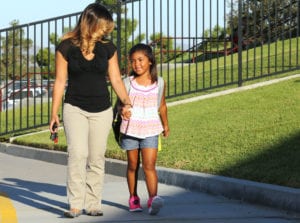4 Tips to Engage Parents and Caregivers
We begin this series with promising practices that welcome parents and caregivers to our STEM work. Family engagement at its best starts with listening to parents. We can learn what parents want and need from organized focus groups and informal conversations. Here are ideas we’ve learned from experts in the field who listen, learn, and welcome families into their work.
1. Listen to understand how to make parents comfortable in the learning environment.
For some parents, a welcoming STEM program may begin with an invitation to come and just observe the first time. Harold Asturias with the Lawrence Hall of Science shares that starting with STEM activities may be intimidating for some families. He learned by listening that some parents instead prefer a chance to first get to know one another before they jump into hands-on STEM experiences.
2. Make the most of drop-off and pick-up time to get to know and listen to parents.

Elaina Oumet with Boys & Girls Clubs of America and her team make it a practice to ask parents a question when they drop off and pick up their children from programs. Over time, these conversation help build relationships that allow her team to develop programs that have impact. This shows a commitment to real family engagement as the practice takes resources for extra staff to talk and listen to parents.
3. Take time and be humble to create trusting relationships with families.

Andres Henriquez at the New York Hall of Science (NYSCI) built trust by starting his work listening to parents. He heard that parents, many of whom were immigrants, wanted opportunities to interact with other parents and staff in their native language and an environment where they could feel comfortable and not out of their depth.
4. It’s personal interaction and invitations that matter.

One of my most helpful and surprising discoveries came from a father of one of the girls in Techbridge Girls. He shared that it was my personal invitation, which was made in a reminder call, that made him feel wanted at a Family Night. He received a flyer in the mail but he didn’t feel that the flyer was meant for him. I never had considered that this was a possibility—that an invitation intended for all families might not be perceived that way for all parents.
Download PDF


